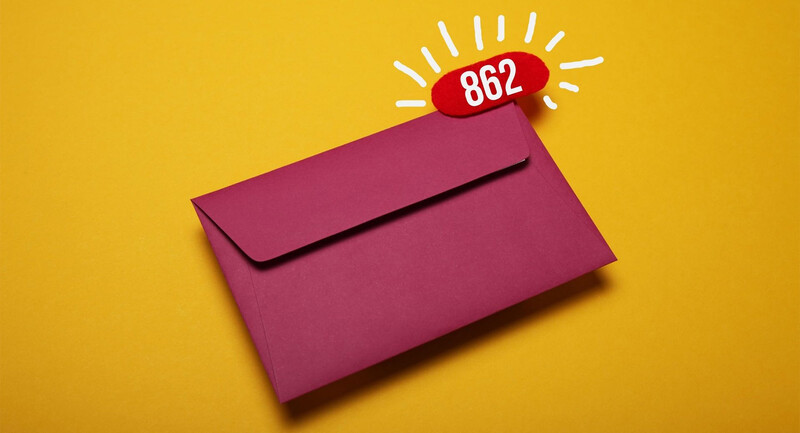This year, for the first time in my professional career, I became a middle school principal at an international school in Muscat, Oman, after seven years as the building’s assistant principal. Despite having brilliant mentors, no one warned me about the deluge of discussions I would be drawn into in the first few weeks on the job. These discussions inevitably arrived in my email inbox.
Day one? I had 87 unread messages. With so much to do, I thought, where do I even start?
Here are four tips to help you become intentionally effective at clearing out that email inbox:
Email Tip #1: Schedule Emails
We often read emails after the school day has ended. For me, reading after school is natural; it allows me the space to relax and carefully respond to questions, concerns, and meeting requests for the days ahead.
My mentor and very close friend Shannon Bruce Ramaka referred to this as my “rhythm.” She challenged me to understand my “rhythm” and schedule my work to align with that flow, saying, “We all have our distinct flow—when we are most productive—and, as a leader, it is vital that you know yours.” To be fair, I hadn’t considered my work from the rhythmic perspective, but she assured me that knowing when I am most productive would aid my well-being and effectiveness. I quickly realized my flow occurred right after school and early in the morning.
But sometimes your flow doesn’t match the optimal timing of an email response. You could try to draft an email and save it for later, but the morning arrives and you forget to send it and suddenly the day races out of your control.
Most email providers offer a powerful tool to manage this: schedule send. Scheduling the time that your emails are delivered helps balance personal flow and your effectiveness with the people you serve.
It means that I, the early riser, can write email responses at the crack of dawn but schedule them to go out at 7:00 a.m. instead of 4:43 a.m. There is a clear advantage to this simple tweak: It relieves pressure on teachers to immediately respond. My aim is to avoid imposing my personal “rhythm” on my team by being respectful of their need to “switch off” at home.
My scheduling system is based on Gmail, but most email providers are now adding this feature to their systems. Microsoft Outlook, for instance, integrates this function through a “Delay Delivery” prompt.
Email Tip#2: Practice Intentional Email Silence
In my first meeting with staff, I decided to reinforce what I call “email silence.” Email silence is an agreement between the principal and staff to not send emails to each other between an agreed upon period of time. In my school, we agreed that no email should be sent after 7:00 p.m. on school days and not before 6:00 a.m. So even if I check emails outside of this agreed upon window, say 8:00 p.m., I will schedule my responses to arrive after 6:00 a.m. on the following day. I have empowered my staff to hold me accountable if I do send the occasional email after the window has closed.
With everyone constantly connected, our teachers need a break and need to disconnect after work to focus on themselves and their families. This policy supports that.
Email Tip #3: Boomerang Your Messages
As I trawl through my emails, I sometimes come across messages that require me to do some research or check in with others before replying. Some principals I know resort to marking these messages as “unread” as a reminder to return to them later. While this method works for some, it conflicts with my quest to achieve a “zero inbox.”
So, another method to achieve the same effect is to use the Boomerang add-on in Gmail. It allows you to command Gmail to resend an email at a later date to your inbox. This way you can decide to respond to an email on Wednesday, for example, rather than having to note its contents on a Monday morning and remember to follow-up. The extension has many other functions as well, like tracking emails, read receipts, inbox pause, and even scheduling. Although Boomerang was originally a free add-on to Gmail, it is also available on Microsoft Outlook.
Email Tip #4: Code Your Subject Lines
How often do you open an email to find the content not immediately relevant or just an information dump? Recently, I received an email from a staff member who was annoyed about the volume of emails he received—and that he had to open each of them to determine their priority level. He gave an example of an email he received that had the subject line, “Student Schedule.” When he opened the email to view its contents, he realized that the email was simply informational and did not require follow-up. He lamented that he couldn’t have known the importance (or not) of the message unless he opened it.
I call these emails, For Your Information (FYIs). Had there been some warning in the subject line, he could have categorized the email without needing to open it to check its contents. Researchers have coined this the “morning inbox” problem. According to Byun and Kirsch, bottlenecks in communication caused by a disorganized inbox may even predict staff turnover.
It might take 15 seconds to scan the content of an email, but that time adds up, especially when you are trying to determine which emails to respond to just before heading off to teach your next lesson.
So, how can you communicate to busy staff members which of your emails to prioritize? Recently, our Superintendent Craig Williamson, shared with me his UFAT coding system for labeling the emails he sends to staff. The “U” means urgent, “F” means FYI, “A” means action, and “T” means timely. If he sends an email with the code “urgent,” it suggests the information is of the highest priority and needs to be addressed quickly. An “action” designation suggests that an action will be needed after reading the message but does not necessarily mean it is urgent. The FYI notes that the message carries vital information but is not urgent, while “timely” means that the information contained within the email is useful and may require an action but could be completed at a later time. I have found that this simple system works both ways for me and my staff.
For new administrators especially, email labeling can provide some sanity. The mindfulness you practice as you apply these codes to your email subject lines will compel you to consider the real purpose of an email. Also, as you invest time in sharpening your outward communication, you are modeling this email labeling system for your team.
For example, an email to the IT team to add a new student to the database would have the subject line, Action: New Student. The contents of the email would then describe the action that needs to be taken. Another email to the same IT team for them to prepare the reporting template would have the subject line, Timely: Reporting Template. This is hardly a perfect system but it’s catching on with my teachers. I am hearing less grumbling from staff about opening emails that are not immediately important. In my opinion, these simple tweaks will take consistent application before they become part of the culture.
Stay the Course
Since employing these four tips, I have seen my productivity skyrocket, along with my team’s. I am hitting my “zero inbox” goal daily and am on top of my email flow. But the key to this success has been a dogged determination to stay the course and press through any bumps.
Now that I spend less time wading through emails, I spend more time walking the corridors, visiting classrooms, conversing with teachers, meeting students, and observing learning. And that’s more fun, right?








